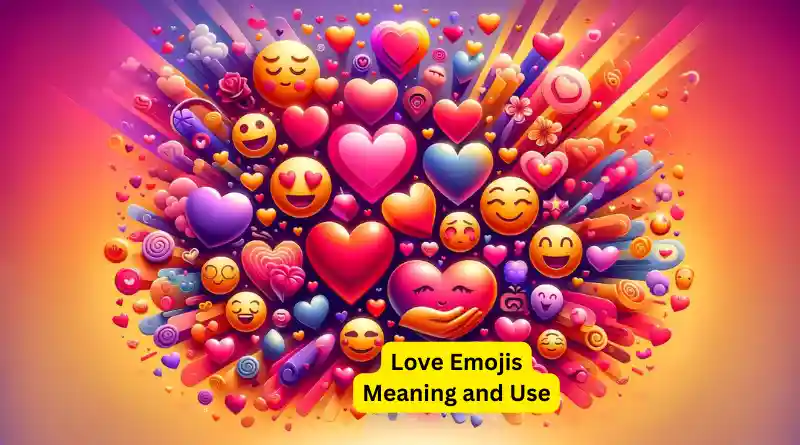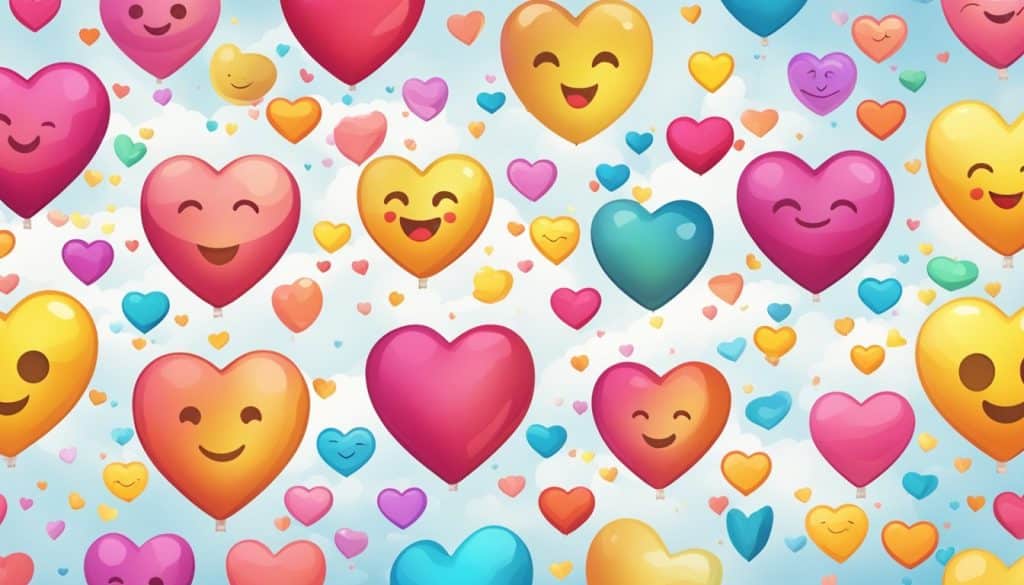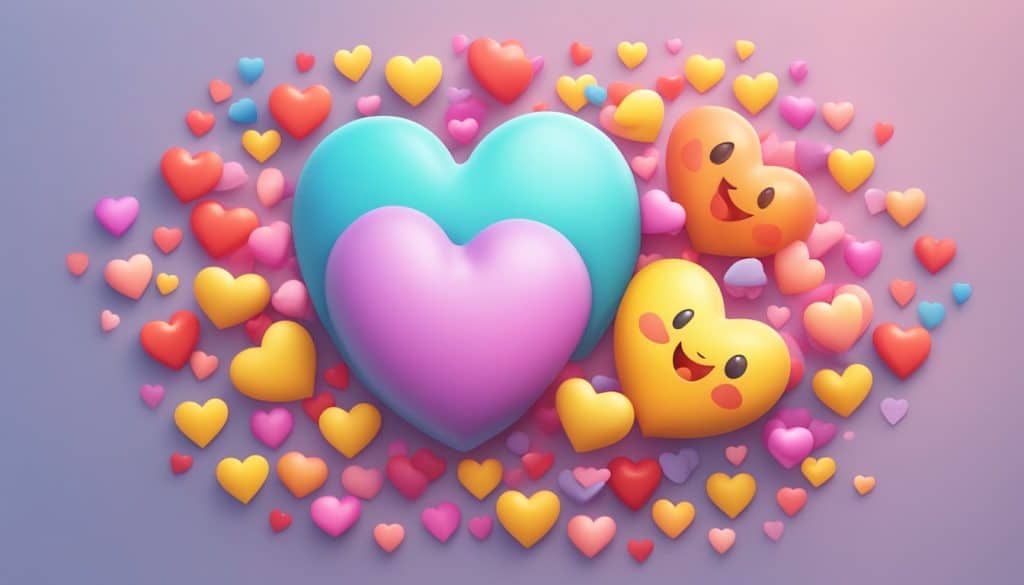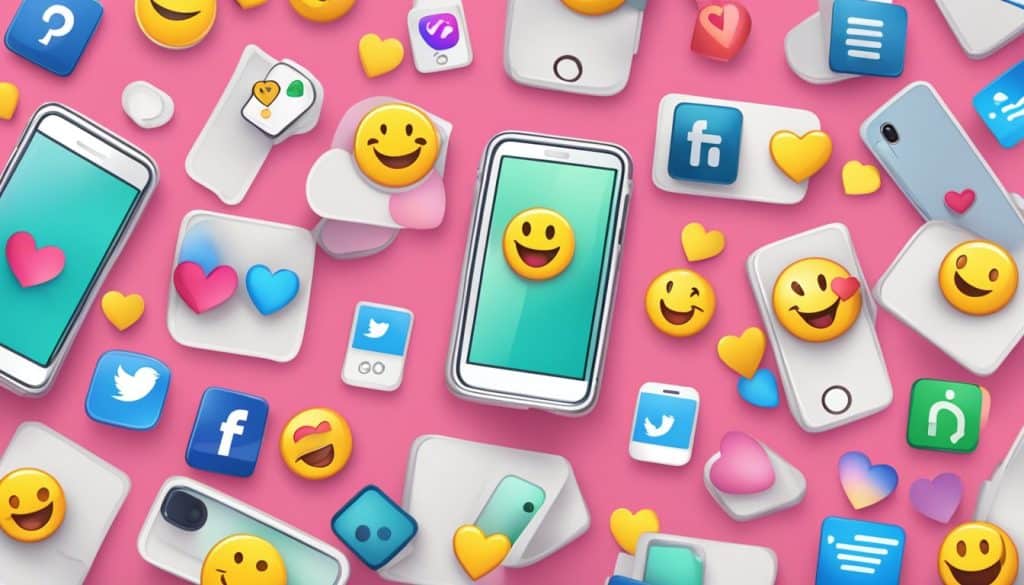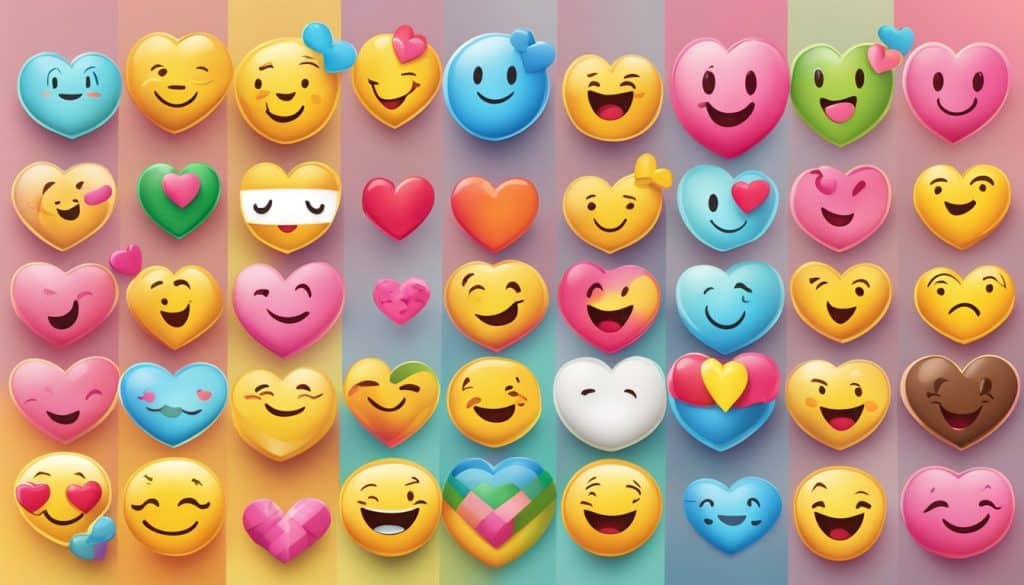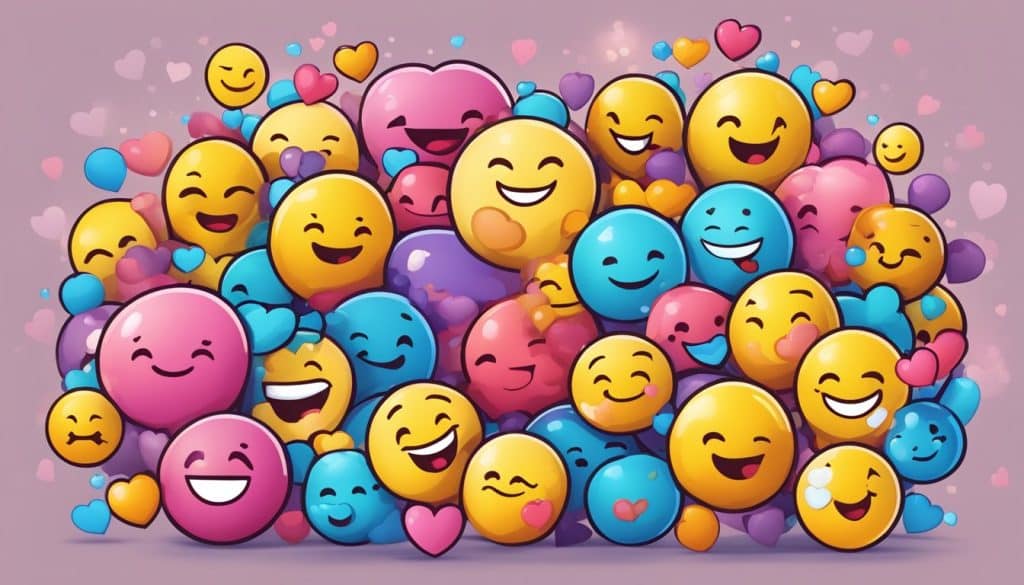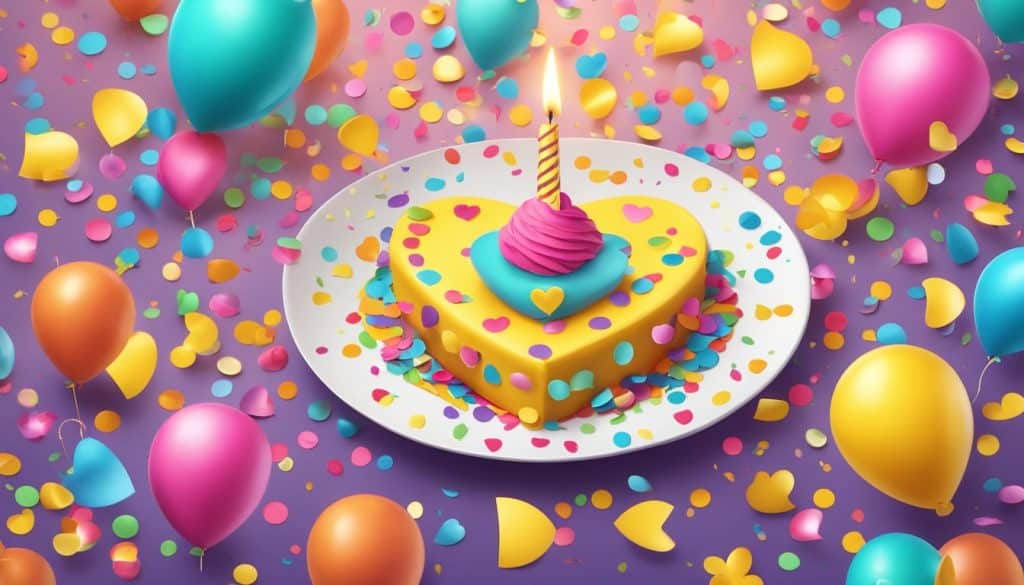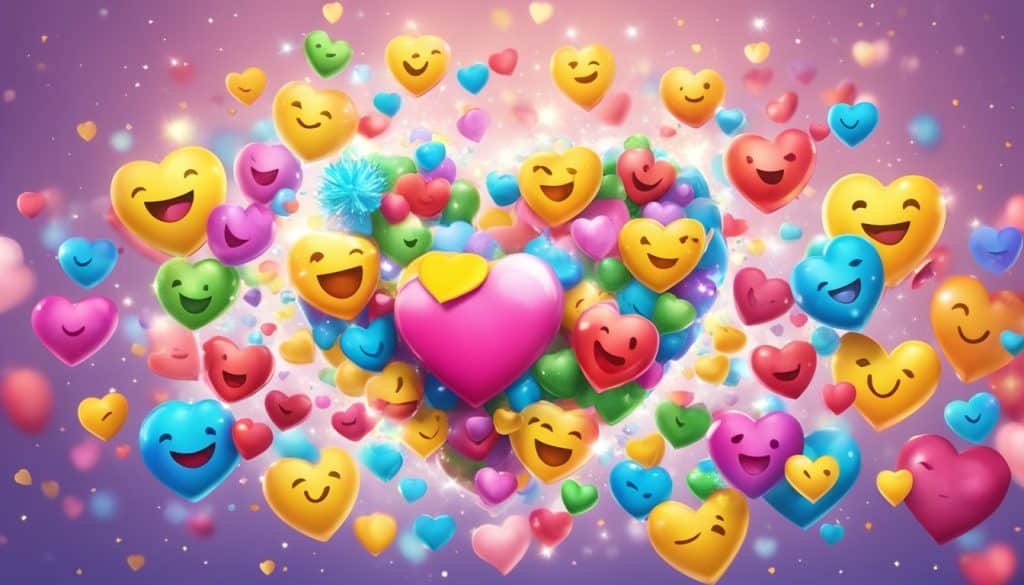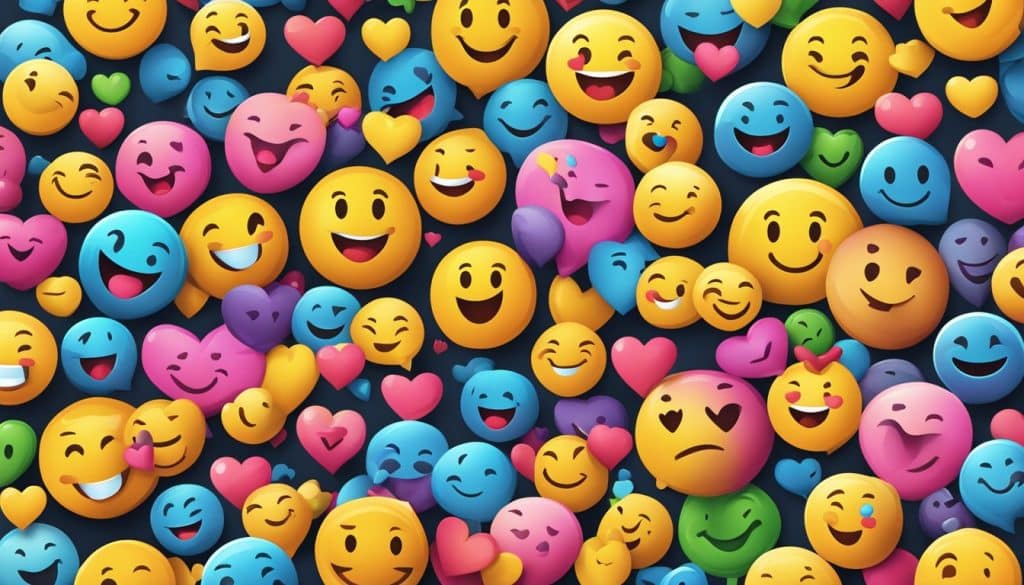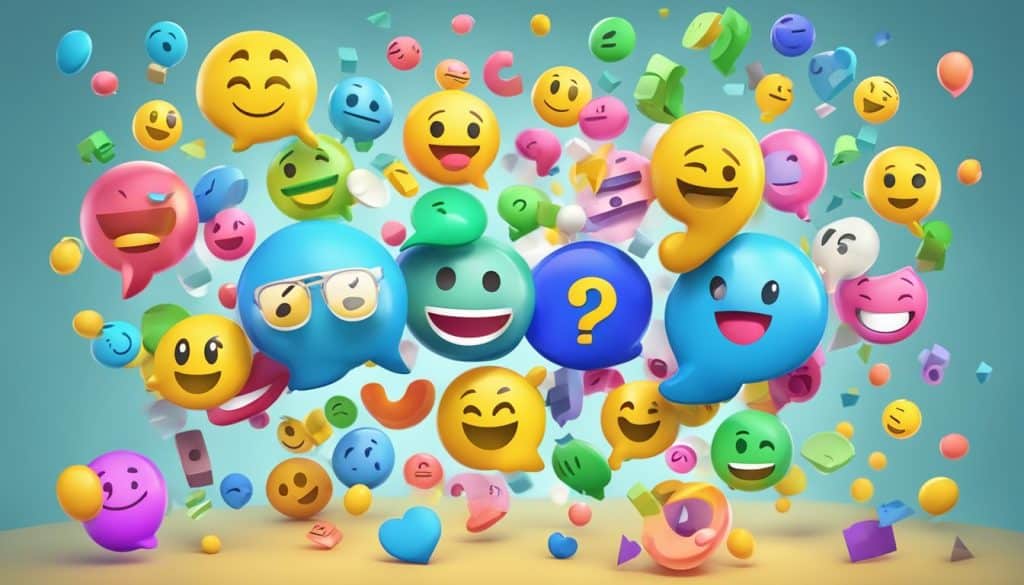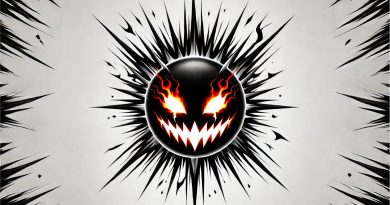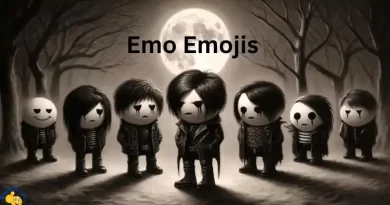Emojis d'amour : Exprimer son affection dans les textes et les médias sociaux
Emojis have become an integral part of our digital language, succinctly conveying emotions and nuances that might take several sentences to describe. When it comes to expressing affection and love, love emojis serve as the perfect shorthand. I effortlessly integrate émojis de cœur such as cœur rouges, smiling faces with hearts, and many other love emojis into conversations, highlighting emotions that resonate with the warmth of human connection. These digital symbols have evolved beyond their decorative function, becoming a tool for expressing complex feelings like love, passion, and friendship in a universally understandable way.
Understanding the nuances behind each love emoji is essential, as they can symbolize different aspects of love and emotion. For instance, a heart emoji is often used to represent romantic love, but its color can convey additional meaning—from the deep bond signified by a red heart to the playful affection of a purple heart. Furthermore, love emojis are deeply woven into social media and branding strategies, where they are used to elicit emotional responses and foster connections with audiences. Through their use, I can navigate social interactions smoothly, celebrate special occasions with flair, and infuse a touch of personality into otherwise plain text.
Principaux enseignements
- Love emojis are digital tools for expressing a variety of emotions related to love and affection.
- The color and type of a love emoji can alter its meaning, affecting how it is interpreted in communication.
- These emojis are significant in digital communication, branding, and in marking special events on social media.
History of Love Emojis
Love emojis have transformed the way I express emotions in digital communication. From simple symbols to a vast array of colorful icons, they’ve become an essential part of expressing affection.
Origine et évolution
Initially, emoticons like the simple “:-)” paved the way for emotional expression through text. Soon, Japon took the lead in creating picture characters known as emojis, with love-themed emojis among them. The émoji cœur, for example, started out as a simplistic <3 but has evolved into a variety of expressions representing love.
Significant contributions came from tech giants like Pomme et Google, both of which integrated emojis into their platforms. This integration helped standardize emojis across different systems, and the love emoji category expanded with new variations. Emojipedia became a valuable resource, chronicling the changes and updates to love emojis as they became a marque déposée of modern digital communication.
Popular Platforms Adoption
Major platforms such as Facebook, Twitteret Instagram have propelled love emojis into everyday use. Facebook reacted by allowing users to express emotions with emojis, while Twitter included emoji reactions for tweets. Microsoft et Pomme further included love emojis in their updates, making them readily available on PCs and smartphones.
Moreover, Android et iOS systems continually update their emoji sets, ensuring users always have the latest love emojis at their fingertips. It’s incredible to see how love emojis have spread across various platforms, simplifying the way I communicate feelings of love and affection.
Meaning Behind Love Emojis
Emojis are a fantastic way to convey feelings without words. When it comes to expressing love and affection, the palette of emojis is vast and colorful. Let’s dive into what these symbols mean, and how they are interpreted across different contexts.
Different Heart Colors
Red Heart (❤️): This is the classic symbol of love. When I send this emoji, it usually means deep love or affection. It’s the go-to for Valentine’s Day and romantic messages.
- Yellow Heart (💛): This heart represents friendship and joy. I might use it to show affection to a friend or celebrate a happy moment.
- Purple Heart (💜): Often used to symbolize compassion or love over digital devices. I tend to send it to show support.
- Cœur bleu (💙): It stands for stability and trust. I’d use this heart in a more platonic sense, perhaps towards a loyal friend.
- Green Heart (💚): Green is for growth and renewal. I sometimes choose this heart when talking about personal growth or new beginnings in relationships.
- Orange Heart (🧡): This heart implies warmth and enthusiasm. For me, it’s perfect for showing support.
- White Heart (🤍): I send a white heart when I want to convey purity or a new, untainted love.
- Black Heart (🖤): This is a more niche emoji used for expressing sorrow, dark humor, or edgy love.
- Brown Heart (🤎): Similarly to others, the brown heart can express a warm, comforting love, often linked to earthiness or richness.
Unique Love Symbols
- Two Hearts (💕): This emoji symbolizes shared love between two people. I think of it as a lighter, more playful affection.
- Revolving Hearts (💞): I send this when I want to show that love is in the air, vibrant and dynamic.
- Growing Heart (💗): A growing heart might be used when my love or affection for someone is growing stronger.
- Heart with Arrow (💘): I use it to indicate being struck by love’s arrow, a sudden onset of love.
- Beating Heart (💓): This shows the literal heartbeat, a sign of life and excitement. For me, it means my heart beats for someone.
Using different emojis in specific contexts can enrich digital communication and enable us to convey nuanced emotions effectively in a friendly and engaging manner. Whether it’s the steadfast 💙 or the compassionate 💜, each emoji has its own charm.
Using Emojis on Social Media
Emojis have revolutionized the way I exprimer ses émotions and share experiences on social media. They add color, nuance, and fun to our online interactions, making them an integral part of social media communication.
Instagram Trends
Sur Instagram, emojis are more than just cute pictures; they’re a language of their own. I’ve noticed that certain emojis tend to trend along with events and popular culture. For instance, during a music festival, you might see a flurry of 🔥 and 🎶 in the comments. Tracking these trends can give clues about the mood and interests of users. It’s fascinating to watch how a new emoji catches on, like the TikTok craze can ignite a frenzy around certain symbols, making them go viral across platforms.
| Emoji | Associated Trend | Plate-forme |
|---|---|---|
| 🔥 | Hot topics/events | |
| 🎶 | Music-related content | TikTok |
| 😍 | Popular products/media |
Strategies for Engagement
To boost engagement, I suggest mixing up the emojis used in social media posts. For instance, pairing a heart emoji with a product image can create an immediate sense of affection. Additionally, prompting followers to use specific emojis in comments can encourage interaction. On Instagram, for example, I could ask followers to comment with their favorite emoji to describe their weekend, creating a fun exchange that increases the visibility of the post. It’s all about how people use emojis – they’re a tool to evoke emotion and connect with the audience.
- Ask Questions: “What emoji sums up your day? 🌞 or ⛈?”
- Run Contests: “Comment with 🏆 to enter our giveaway!”
- Show Personality: Use emojis that match your brand’s tone.
By mastering these simple strategies and keeping a close eye on trends, I find myself seamlessly integrating emojis into a successful social media strategy. Using emojis effectively means understanding and engaging with the audience, which in return, helps my messages resonate more deeply.
Love Emojis in Digital Communication
Love emojis have fundamentally transformed the way I express my emotions digitally, especially when it comes to conveying affection and romantic interest. These simple icons are not just playful additions but have now become an essential part of personal messaging and online dating, helping to bridge the emotional gap often created by text-based communication.
Personal Messaging
When I send a message to someone I care about, the face blowing a kiss 😘 emoji often accompanies my farewell. It’s a sweet way to add a personal touch and convey warmth in conversation. Meanwhile, the smiling face with heart-eyes 😍 is perfect when I want to show that I’m truly enamored or appreciative of someone or something they’ve shared. It’s amazing how one small emoji can express so much feeling. When I’m texting friends and family, these émojis d'amour can effectively substitute for the phrase “I love you,” especially when time is short, or I feel like words just aren’t enough.
Online Dating
In the realm of online dating, emojis are essential. They can indicate interest, set a friendly tone, and make my messages stand out. When diving into someone’s DMs for the first time, I might include a 😘 to flirt just a bit without coming on too strong. If the conversation is going well, I might elevate to using 😍 to show my attraction to their personality or to something fascinating they mentioned. Strategically placed love emojis provide cues about my feelings and can serve as a digital nudge towards deeper connection, much like a playful glance or a smile might in face-to-face interactions.
Conception et variation
Emojis, especially love emojis, have evolved to feature charming designs that appeal to a broad audience. Crucial to their success is how these lively icons adapt across various platforms, showing slight but fascinating differences.
Cross-Platform Differences
Apple Inc. often leads with highly detailed and expressive designs for their emojis, including their émojis de cœur, which feature a glossy effect and a 3D appearance that seems to pop off the screen. Conversely, Microsoft Corporation designs their emojis, including love symbols, with a flatter look, often opting for a more straightforward aesthetic that’s easily identifiable at smaller sizes.
Google‘s designs for love-related emojis have matured over the years, shifting from a more cartoon-like appearance to a collection of heart emojis with an emphasis on simplicity and readability. This evolution ensures that they retain their expressiveness even on smaller displays found on wearable devices or in the margins of Google services.
Then, consider the platform Zedge, well-known for its wide array of wallpapers and ringtones; it also houses user-generated emoji designs. These can vary dramatically, as aspiring designers bring their unique flair to love emoji art, resulting in stunning variations not found on major platforms.
Additionally, cross-platform compatibility is a significant concern. While a colorful heart sent from an iPhone might display a similar sentiment on an Android device, the visual design may alter slightly to fit into the stylistic palette adopted by Google. It’s these subtle nuances that make emoji usage an intriguing study of digital communication.
Switching between platforms can sometimes lead to delightful surprises or minor misunderstandings due to these design differences. However, the core emotion they represent tends to shine through, ensuring that the message of love remains intact. It’s this universal comprehensibility that cements emojis as a mainstay in our digital conversations.
Love Emojis and Branding
With the integration of love emojis, brands have managed to humanize their marketing efforts and resonate emotionally with consumers. By incorporating symbols such as the red heart or the face with hearts, companies communicate feelings of love and affection intended to appeal directly to the customer’s emotive side.
Incorporation in Marketing
Firstly, love emojis have found their way into the point of sale systems and marketing material of many retail stores. It’s not uncommon to see a friendly heart-eyed emoji popping up on the National Retail Solutions (NRS) terminal, making the checkout process feel more personal and engaging. Retail brands utilize these symbols during Valentine’s Day campaigns or when promoting items related to romance and relationships. By leveraging these visual elements, companies create advertisements that are more expressive and relatable. For instance, incorporating a love emoji in an email subject line has been shown to increase open rates, as it immediately conveys warmth and approachability.
Brands and Emotion
Additionally, brands often harness the power of emotions to foster a deeper connection with their target audience. Using love emojis effectively, a brand can evoke sentiments that resonate on a personal level, creating more memorable interactions. For example, on social media platforms, a simple heart or kiss emoji can transform a standard promotional message into a conversational and affectionate exchange that captures the essence of the brand’s identity. This strategy not only enhances customer engagement but also strengthens the brand’s image as empathetic and customer-centric.
Psychology of Emoji Use
Emojis play a crucial role in digital communication, offering a way to convey emotions and cultural nuances. They have significantly altered how I express feelings and navigate cross-cultural interactions online.
Emojis and Emotional Expression
Emojis present a unique method for expressing emotions in our text-centric conversations. For instance, a study found that emojis effectively communicate affective information, which might be challenging to convey through words alone. They serve numerous functions, such as conveying happiness with a simple 🙂, or showing support and love with 💕. Furthermore, I’ve observed that emojis are often used to add tone to messages that could be otherwise ambiguous, preventing misunderstandings and softening statements that might appear too harsh. Emojis have indeed become integral in adding an emotional layer to our digital dialogues.
Cultural Differences in Understanding Emojis
The understanding and use of emojis can vary significantly across cultures. While a thumbs-up 👍 may be considered positive in many places, in certain cultures, it might have a completely different, sometimes offensive, interpretation. Similarly, the interpretation of emojis can shift over time and be influenced by social trends or political climates. As such, a seemingly innocent character like 💃 could hold various meanings, not just limited to dancing but also celebration or even sarcasm, depending on where it’s used. It’s compelling to unravel these cultural layers, as they color our perception of emojis and guide my usage of them when interacting with people from different backgrounds.
Etiquette Emoji
Navigating the colorful world of emojis can be tricky, especially when it comes to expressing emotions like love and heartbreak. It’s important to use these symbols wisely, as they carry different weights depending on the context. Now, let’s explore the do’s and don’ts.
Professional vs Casual Use
In professional settings, it’s crucial to maintain a level of formality, even in our digital communication. While a émoji cœur may seem harmless, it can be misinterpreted or deemed unprofessional. As such, I stay clear of using any love-related emojis in work emails or messages to ensure my communication remains appropriate.
Conversely, casual conversations with friends or loved ones are the perfect scenarios for expressing feelings with emojis. A heart emoji can encapsulate affection beautifully in a text to someone close to you. Nevertheless, I always consider the relationship’s nature and the other person’s comfort level with the use of emojis.
Sensitive Contexts
At times, conversations may turn sensitive, addressing topics like heartache or emotional support. In these moments, a misstep in emoji use can convey the wrong sentiment. If someone is going through a breakup, sending a broken heart emoji might either offer solidarity or, adversely, can be seen as insensitive depending on the individual’s perspective. I tend to use such potent symbols sparingly and thoughtfully to ensure my messages are received with the empathy I intend.
Occasions spéciales
When it comes to expressing feelings on special occasions, emojis offer a colorful and fun way to add a little extra heart to your messages. Whether you’re celebrating Valentine’s Day or marking another year with your significant other, there’s an emoji to help convey your love and affection.
Valentine’s Day Emojis
Sur Valentine’s Day, emojis such as the 💘 Heart with Arrow or 💌 Love Letter become even more popular. I like to think of these symbols as little digital gifts that I can send to friends, family, or that special someone. For instance, pairing a simple 🌹 Rose with a 💌 Love Letter emoji can make a text message feel like a handwritten note.
Now, it’s not just about the classics. The 💑 Couple with Heart emoji is perfect for showcasing the bond between two people. And don’t forget the 🎁 Heart with Ribbon when you want to emphasize that your love is a gift to be cherished. Each of these emojis can add depth to your Valentine’s wishes, transforming a basic text into a memorable message.
Weddings and Anniversaries
Weddings and anniversaries are events full of love and a time to reflect on the journey together. Emojis can add that special touch to your messages on these occasions. The 💒 Wedding emoji, depicting a church, often represents the wedding day itself or can be used in an anniversary message to recall that beautiful event.
For anniversaries, the use of different colored heart emojis can symbolize the passage of time and the evolution of love. Incorporating a 💚 Green Heart can show enduring love that continues to grow, while a 💛 Yellow Heart might celebrate the joy and friendship that form the foundation of your relationship. Every year is a milestone, and a thoughtful emoji message can remind your significant other of the special place they hold in your heart.
Creative Uses of Love Emojis
Love emojis offer a colorful and expressive way to add a heartfelt touch to various forms of communication and art. They’ve become digital symbols that carry emotion and meaning, perfect for sprinkling a little love into our digital lives.
Art and DIY Projects
In today’s digital age, I love getting creative with emojis, particularly when infusing them into art and DIY projects. I often use the smiling face with hearts to add a touch of affection to my creations. Consider crafting handmade cards, where I imprint this emoji alongside loving words, giving the card a modern yet intimate feel. Additionally, I like making wall art by arranging various love emojis, like the sparkling heart, to compose a visually appealing piece that radiates affection.
Emoji Stories and Games
Creating emoji stories is another engaging way I utilize love emojis. I sometimes challenge my friends to compose short tales using only emojis, with the smiling face with hearts setting the scene for a love story. For games, I combine various love emojis in a game of pictionary, where participants guess phrases or movie titles made entirely out of emojis, incorporating love symbols like the sparkling heart for romantic categories. It’s not only entertaining but also a great way to understand the depth of emotion each emoji can convey.
Aspects techniques
When you glance at your phone and see a heart emoji, it’s easy to just appreciate the sentiment, but the technology behind it is quite intricate. So, let’s dig into the nuts and bolts of what makes these colorful communicators work flawlessly across devices.
Unicode Standards
Firstly, Unicode is the backbone that ensures every emoji yousend appears the same on someone else’s phone. It’s a universal standard that assigns a unique code to each character, no matter the platform. For instance, the love heart emoji has a specific Unicode (U+2764) which means no matter where it’s sent, it maintains its meaning. When new emojis are introduced, like the ones we see at Emojipedia, they undergo a detailed approval process to be included in the Unicode Standard.
Also, performance and loading times vary per device and application. To ensure consistency and speed, major tech companies work collaboratively within the Unicode Consortium to create efficient, cross-compatible emoji representations.
Accessibility Concerns
Additionally, emojis faces a challenge with accessibility. Not everyone interprets images in the same way, especially if they’re visually impaired. Descriptions or ‘alt text’ for these symbols allow screen readers to convey their meaning audibly. It’s crucial for emoji creators to keep these descriptions straightforward and precise, to bridge communication gaps.
Moreover, new updates often include accessibility improvements, such as better contrast or design adjustments. This can make a world of difference for individuals who rely on assistive technologies to read and enjoy emojis—even the countless love emojis we sprinkle into our daily digital conversations. 💌👀
Summary and Frequently Asked Questions
Emojis are a huge part of how I communicate emotions in the digital age. Let’s dive into some of the most common questions about using love emojis to add that extra warmth to our messages.
Summary Key Points
How do you copy and paste a heart emoji?
Whenever I want to share a heart emoji, I simply select it with my cursor, right-click and choose ‘Copy,’ then I navigate to where I wish to use it, right-click again, and select ‘Paste.’ It’s that simple! Alternatively, on a mobile device, I tap and hold the emoji and select ‘Copy,’ then paste it into the message field the same way.
What are some sweet emoji combinations to send to someone special?
Combining a kissing face with a heart emoji adds a loving touch to my text. I also like pairing the sparkle emoji with a heart to show excitement and affection, or a bouquet of flowers with a love letter to create a romantic vibe.
What is the significance of different colored heart emojis?
Different colored heart emojis convey various types of love or emotion. For example, a cœur rouge represents romantic love, while a yellow heart might symbolize friendship. Each color has its own unique message, so I pick the hue that best matches my feelings.
What does the revolving hearts (💕) emoji typically represent?
Les revolving hearts emoji, 💕, usually signifies affectionate emotions and a close bond. It’s my go-to when I’m feeling especially fond of someone or when I want to show support and friendship.
What does the orange heart (🧡) emoji signify when someone sends it?
When I receive an orange heart emoji, 🧡, it often means cheerfulness and gratitude. It’s a less intense expression of love than the red heart, making it versatile for different kinds of relationships.
How is the smiling face with hearts (🥰) emoji used in texting to express emotion?
The smiling face with hearts, 🥰, is one of my favorites because it expresses an outpouring of love and happiness. I use it when I’m feeling deeply affectionate or when something makes me beam with joy. It’s perfect for those moments that give you warm, fuzzy feelings inside.
FAQ
Love emojis are digital icons used to express different shades of affection and emotional bonds in our online chats. They range from colorful heart symbols, each color conveying unique sentiments, to expressive faces like the one with heart eyes, symbolizing adoration. These emojis act as a bridge, allowing us to convey our feelings of love and connection in a visually engaging and universally understandable manner.
This emoji is your go-to for moments of pure joy and love. It’s like wrapping yourself in a big, warm hug, showing that love is truly surrounding you.
The Two Hearts emoji captures the essence of shared love, whether it’s with your family, a friend, or a partner. It’s about the connection that turns two hearts red with affection
It’s all about that head-over-heels, can’t-stop-thinking-about-you kind of love. The Revolving Hearts emoji says, “You’re my everything,” in a whirlwind of emotion.
The Broken Heart emoji is for those tough times of sadness or loss. It’s a way to express that you’re feeling the pain of a breakup or missing someone dearly.

